This innovative method of growing plants is gaining popularity in Australia, and for good reason. Raised bed gardening in Australia offers numerous benefits that help you achieve a thriving garden. Raised beds also provide better access for planting, weeding, and harvesting. Furthermore, they help minimize weed competition by providing a physical barrier between invasive plants in the ground.
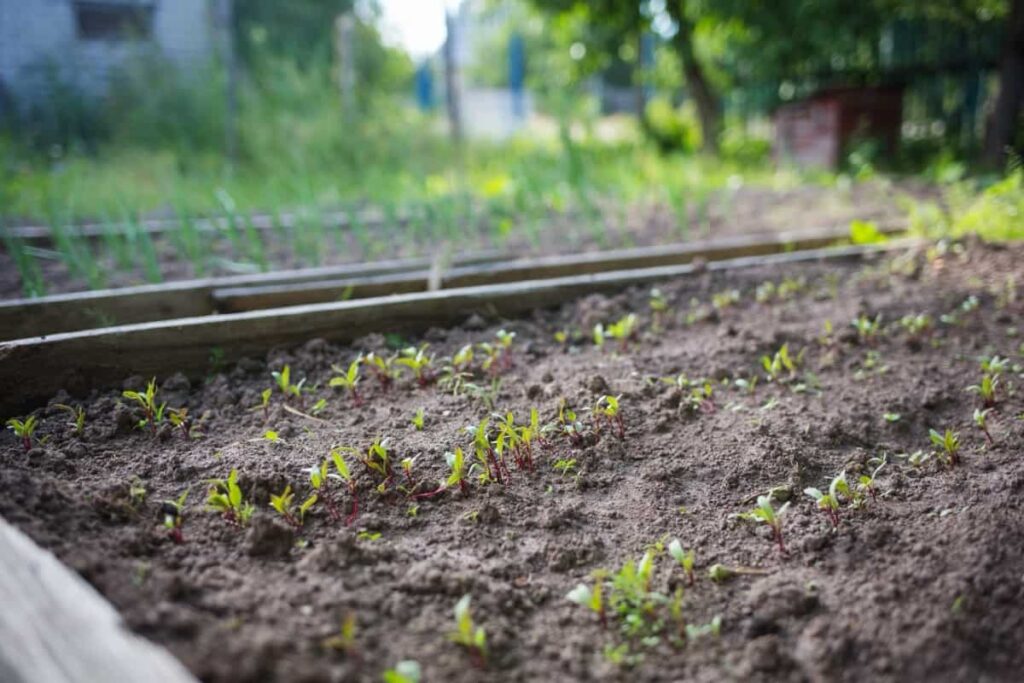
Benefits of Raised Bed Gardening for Vegetables, Flowers, and Herbs
These beds are typically constructed using wooden boards or other materials, creating defined boundaries for your plants. One major advantage of raised bed gardening is its ability to combat poor soil quality. The soil may be sandy, clay-heavy, or lacking essential nutrients in many parts of Australia. You can create an optimal growing medium for your beloved vegetables, flowers, and herbs using raised beds filled with nutrient-rich soil mixtures tailored to your needs.
Another benefit lies in the improved drainage and aeration provided by raised beds. Additionally, the increased airflow around the plants helps prevent fungal infections. Raised bed gardening offers greater control over weed growth. With clear boundaries between each box and proper mulching techniques, you can minimize weed competition and spend less time on tedious weeding tasks. In addition, raised bed gardening allows for easier weed control.
Soil Preparation and Amending for Raised Bed Gardening in Australia
Start by removing any existing vegetation, weeds, or debris from the area where you plan to build your raised beds. Test your soil to find its pH level and nutrient content. This will help you understand what amendments may be necessary to optimize plant growth. Consider incorporating a balanced fertilizer into the soil mix before filling your raised beds. This can provide essential nutrients that may be lacking in the native soil.
Select the Location for Your Raised Bed Garden in Australia
To design a raised bed garden in Australia, the location you choose can directly impact the success of your plants and overall productivity. Firstly, you must find a spot that receives ample sunlight throughout the day. Most vegetables, flowers, and herbs require at least 6-8 hours of direct sunlight to thrive. Look for an area in your yard not shaded by trees or buildings.
In addition to sunlight, it’s crucial to consider access to water. Ensure your chosen location has easy access to a water source or irrigation system. This will make watering your raised beds much more convenient and efficient.
Selecting the Best Materials for Building Raised Beds in Australia
One of the most popular options is timber, such as treated pine or hardwood. These materials can withstand the harsh Australian climate. Another option is using corrugated iron steel. This sturdy material provides a modern look to your raised beds. It is resistant to rusting and can last for many years.
If you prefer a more sustainable approach, consider using recycled materials like old pallets or railway sleepers. Not only will this give your garden a unique and rustic charm, but it also reduces waste and helps the environment. No matter which material you choose, ensure it is non-toxic and free from chemicals potentially leaching into your soil. This ensures that your plants grow in a healthy environment.
In case you missed it: Exploring the Innovative Techniques of Australian Greenhouse Farming
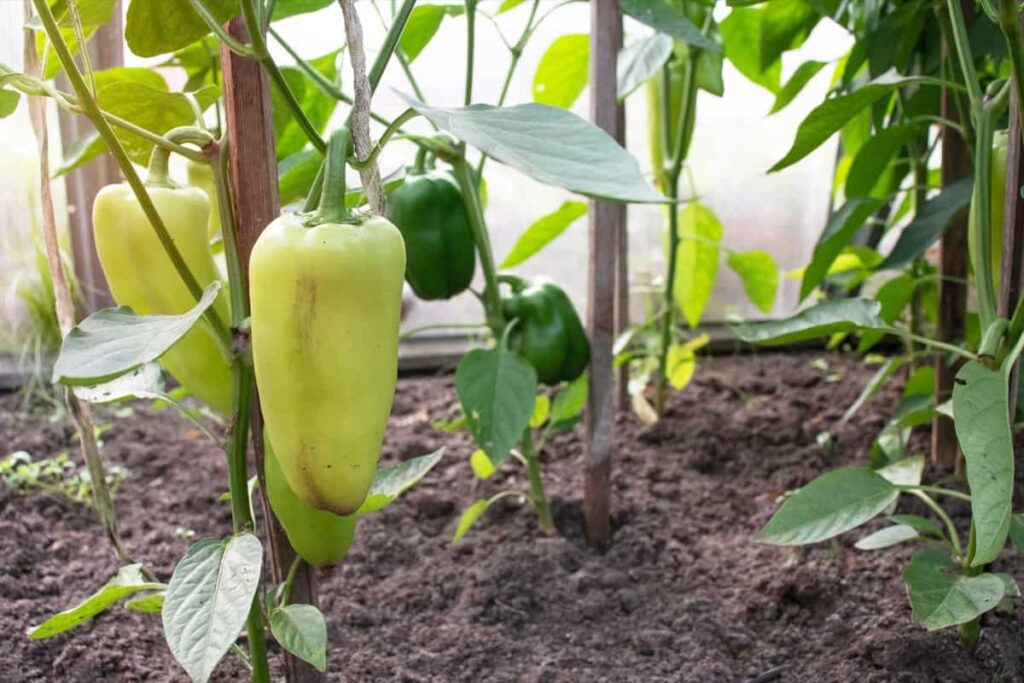
Designing and Planning Your Raised Bed Garden Layout
Designing and planning your raised bed garden layout is an exciting step in creating a productive and visually appealing space. Before getting started, consider the size of your garden area and the types of plants you want to grow. Begin by sketching a rough design of your raised beds on paper or using a digital tool. Think about the shape and arrangement that will work best for your space. Rectangular beds are common, but don’t be afraid to get creative with curved or zigzag designs.
Next, consider the height and width of your beds. For vegetables, aim for a width of around 4 feet to reach across from either side easily. Keep in mind that taller beds may require more soil to fill them. When spacing between raised beds, leave enough room for pathways that allow easy access for watering, weeding, and harvesting. A minimum pathway width of 18 inches should suffice. Consider any existing structures or features in your garden area when deciding where to place your raised beds. Consider sunlight exposure and potential shading from nearby trees or buildings throughout the day.
Planting Techniques and Spacing in Raised Bed Gardens
One key technique in a raised bed garden is ensuring enough room between plants. Crowding can lead to poor airflow and an increased risk of disease. Be mindful of the recommended spacing for each vegetable, herb, or flower you’re planting. Another technique is called intercropping, which involves planting complementary crops together. For example, pairing tall plants with shorter ones can provide shade and wind protection. This strategy also helps deter pests by confusing them with various scents and textures.
Succession planting is another great method for maximizing your harvest throughout the growing season to create raised bed gardens in Australia. By staggering your plantings at different times, you can ensure a continuous supply of fresh produce or blooms. Consider using trellises or cages for vining vegetables like tomatoes or cucumbers. These vertical supports save space and promote better air circulation and easier harvesting.
It’s essential to pay attention to the specific needs of each plant regarding sunlight requirements and soil conditions when determining their placement within your raised bed garden. Some plants grow well in full sun, while others prefer partial shade. Remember that raised beds tend to dry out more quickly than traditional gardens, so be diligent about watering regularly and mulching around your plants to help retain moisture.
Irrigation and Watering Considerations for Raised Bed Gardens
With proper watering techniques, you can ensure that plants receive the right moisture levels they need to thrive. One important aspect is knowing when and how much to water your raised beds. Unlike traditional gardens, raised beds tend to dry out more quickly due to their elevated position. Therefore, it’s essential to monitor the moisture levels regularly and water accordingly.
In case you missed it: How to Grow Tomatoes in Australia from Seed: Best Time to Plant in Pots, the Backyard at Home for Sydney, Melbourne, and Victoria
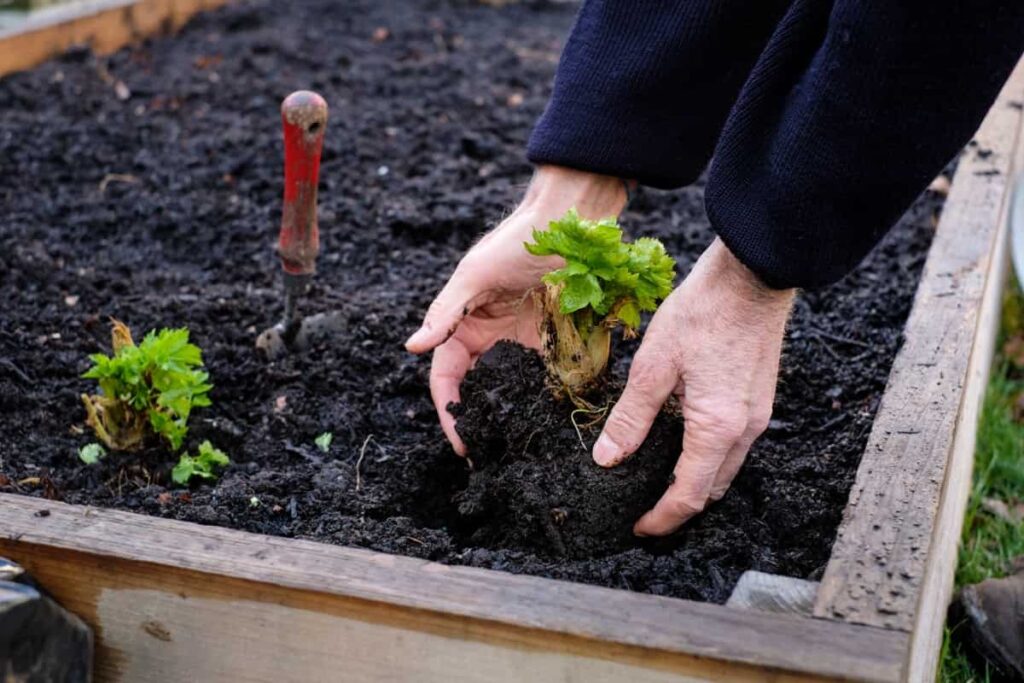
A drip irrigation in your raised beds is advisable to prevent overwatering or underwatering. These methods provide a slow and steady water supply directly to the plant roots, minimizing waste and ensuring efficient absorption.
Another consideration is the time of day for watering. It’s best to water early in the morning or late in the afternoon when temperatures are cooler. This helps reduce evaporation and allows plants ample time to absorb moisture before evening. Consider factors like rainfall patterns and seasonal changes when determining your irrigation schedule. Adjustments may be necessary during hot summers or prolonged dry spells.
Fertilizing and Nutrient Management in Raised Bed Gardening
Fertilizing and managing nutrients in raised bed gardening is crucial for the health and productivity of your plants. One effective method is using organic fertilizers such as compost or well-rotted manure. Before adding any fertilizer, testing your soil’s pH level is essential. Different plants have different pH requirements, so adjusting the pH can maximize nutrient availability. Always follow package instructions for proper dosage when applying fertilizers in raised beds. Over-fertilizing the plant can lead to nutrient imbalances or even burn plants’ roots. Slow-release fertilizers are a great option as they provide a steady supply of nutrients over time.
In addition to regular fertilization, incorporating cover crops into your raised bed garden helps build soil fertility naturally by fixing nitrogen from the air and preventing erosion. Regular monitoring of nutrient levels through leaf analysis or observing plant symptoms will help identify any deficiencies or excesses that may arise throughout the growing season. Properly managing fertilization and nutrient levels in a raised bed garden will ensure healthy growth and bountiful harvests year-round.
Pest and Disease Control Strategies for Raised Bed Gardens in Australia
One common pest for raised bed gardens in Australian gardens is the aphid. These insects feed on plant sap and reproduce rapidly, causing stunted growth and distorted leaves. Consider introducing natural predators like ladybugs or lacewings into your garden to control aphids. You can use neem oil sprays to deter them.
Another notorious pest to set up a raised bed garden in Australia is the caterpillar, which can quickly devour foliage and ruin crops. Handpicking these critters off your plants can be effective, especially if you catch them early. Alternatively, you can use biological controls such as Bacillus thuringiensis (Bt), a naturally occurring bacteria specifically targeting caterpillars.
Fungal diseases are also prevalent in Australian gardens, particularly during humid weather. To prevent fungal infections like powdery mildew or black spot, ensure proper airflow by spacing out your plants adequately. Watering at ground level rather than overhead will help keep foliage dry and reduce infection risk. In addition to these preventive measures, regularly inspecting your garden plants for signs of pests or diseases is essential for early detection and prompt action. Remove any infected plant parts immediately to prevent further spread within the garden.
Companion Planting in Raised Bed Gardens for Improved Yield and Pest Control
One popular example of companion planting in a raised bed garden is the combination of tomatoes and basil. Basil enhances the flavor of tomatoes and helps repel pests like aphids and hornworms. Similarly, marigolds are often planted alongside vegetables such as cucumbers or squash to deter nematodes and beetles.
In case you missed it: How to Start Hydroponic Farming in Australia: Scope, Types, Pros, and Cons
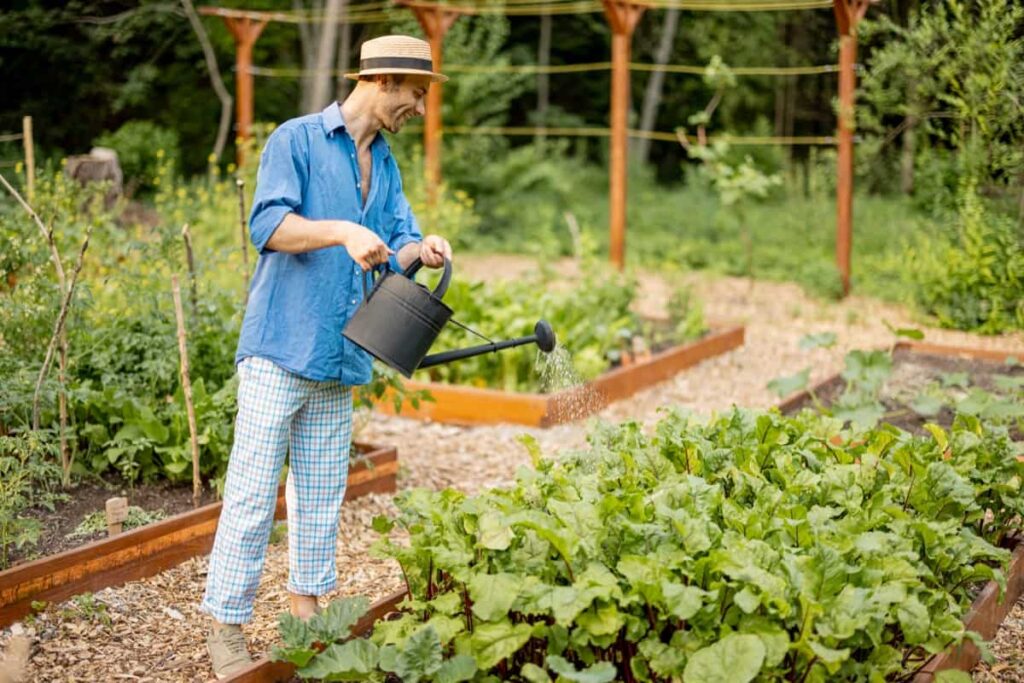
Another beneficial pairing is beans with corn. Beans fix nitrogen in the soil, which provides corn with this essential nutrient. In return, corn is a natural trellis for the beans to climb. Herbs like dill, parsley, or cilantro attract beneficial insects that prey on common garden pests like aphids or caterpillars. This creates a balanced ecosystem within your raised bed garden.
When planning your companion planting scheme, consider plant height compatibility, sunlight requirements, and water needs. It’s important to choose companions that complement each other rather than compete for resources. By incorporating companion planting techniques into your raised bed gardening practices, you’ll maximize your yields and minimize pest problems naturally without relying heavily on chemical interventions.
Extending the Growing Season with Raised Bed Gardening Techniques
Using row covers or cold frames is one way to lengthen the growing season. These protective structures help trap heat and create a microclimate that keeps plants warm even during cooler temperatures. Start planting earlier in spring by covering your raised beds with these structures and continue harvesting well into fall.
Another technique for extending the growing season with a raised bed garden is succession planting. Instead of immediately planting all your seeds or seedlings, stagger your plantings throughout the season. This ensures a continuous harvest as older crops are harvested, and new ones are replaced. If you have limited space but want to grow year-round, consider investing in a greenhouse. A greenhouse provides optimal growing conditions regardless of external weather patterns.
Harvesting and Preserving Vegetables, Flowers, and Herbs from Raised Beds
When it comes to harvesting vegetables from raised beds, timing is key. The raised bed gardening for vegetables in Australia includes tomatoes, cucumbers, and lettuce greens such as rocket and spinach. Different crops have different maturity times, so research when each vegetable should be harvested. For example, leafy greens like lettuce can be harvested when they reach a desired size, while root vegetables such as carrots should be pulled from the soil when they are mature.
Flowers grown in raised beds also provide a beautiful addition to any garden space. When harvesting flowers for bouquets or arrangements, choosing fully open blooms that are not yet past their prime is important. Cut stems at an angle and immediately place them in water for maximum freshness. Herbs are another valuable asset in a raised bed garden. Harvesting herbs regularly promotes healthy growth and ensures a steady supply for culinary use. Clip herb stems just above a set of leaves using sharp scissors or pruning shears.
Preserving your harvest is an excellent way to extend its lifespan and enjoy homegrown produce throughout the year. Options for preserving vegetables include canning, freezing, pickling, or drying. Flowers can be dried upside down in a cool, dark place until completely dry. Herbs can be dried by tying bunches with twine and hanging them upside down.
Common Mistakes to Avoid in Raised Bed Gardening in Australia
Overcrowding: One common mistake many raised bed gardeners make is overcrowding their raised beds. While it can be tempting to pack as many plants into a small space, this can hinder their growth and lead to competition for nutrients and sunlight. Give your plants enough room to thrive by following spacing guidelines and considering the mature size of each plant.
In case you missed it: Australia Vegetable Planting Calendar: Month-wise Chart, Dates Guide, Schedule for Climate-wise Regions
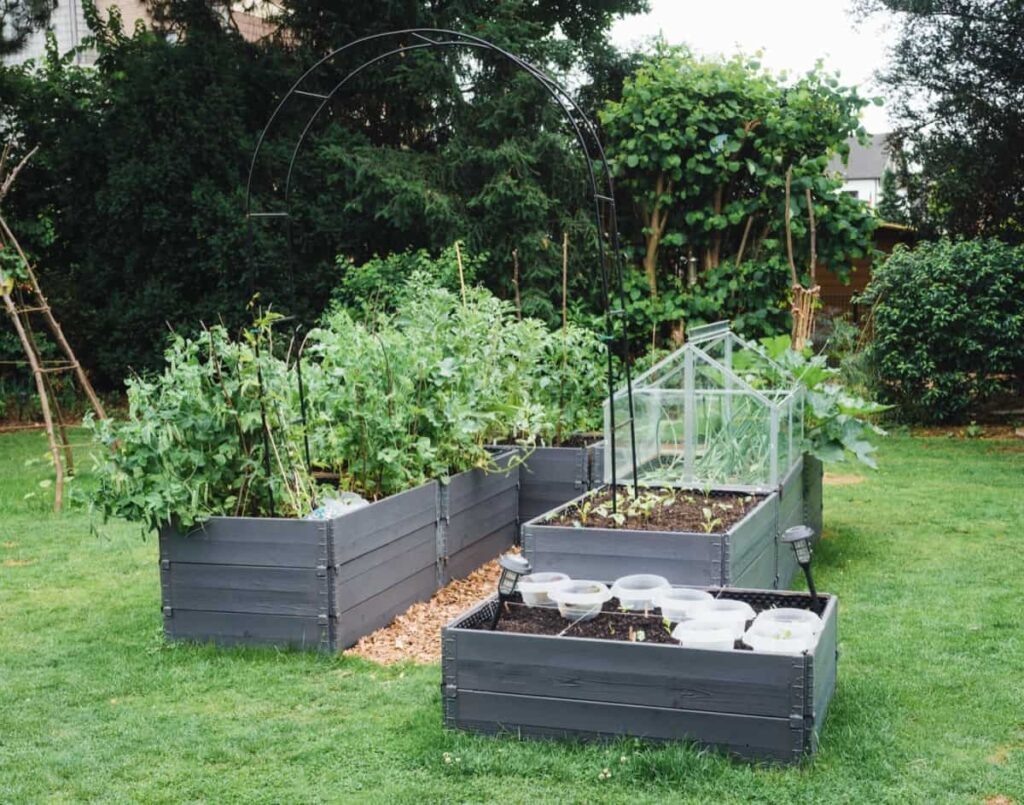
Poor drainage: Another mistake is inadequate drainage for your raised bed. Excess water can build up without proper drainage, leading to fungal diseases. Ensure your raised bed has sufficient drainage holes, or use a well-draining soil mix.
Neglecting soil health: Soil quality is crucial for successful gardening, yet it’s often overlooked. Many gardeners fail to regularly amend their soil with organic matter or add necessary nutrients, resulting in poor plant growth and yield. Regularly nourish your soil by adding compost, aged manure, or other organic amendments.
Lack of pest control measures: Pests, including raised beds, are a constant threat in any garden. Ignoring pest control measures can quickly result in damaged crops and disappointment after all your hard work. Implement preventive strategies like companion planting or using natural pest repellents early on.
Raised Bed Gardening in Australia Table
| Plants suitable for your raised bed garden | Examples | Benefits |
| Vegetables | Tomatoes, lettuce, peppers, carrots, and beans | These veggies thrive in the warm climate and are relatively easy to cultivate. |
| Flowers | Marigolds, cosmos, zinnias, and sunflowers | Add beauty to any garden space. These vibrant blooms attract pollinators and bring joy to your outdoor space all season. |
| Herbs | Basil, mint varieties like spearmint or peppermint, aromatic herbs like rosemary or thyme | Grows well in Australia’s warmer regions. They allow for optimal soil conditions and easier maintenance. |
In case you missed it: 12 Garden Watering System Kits – For Raised Garden Beds, Yards, Container Plants, Lawns, and Greenhouse
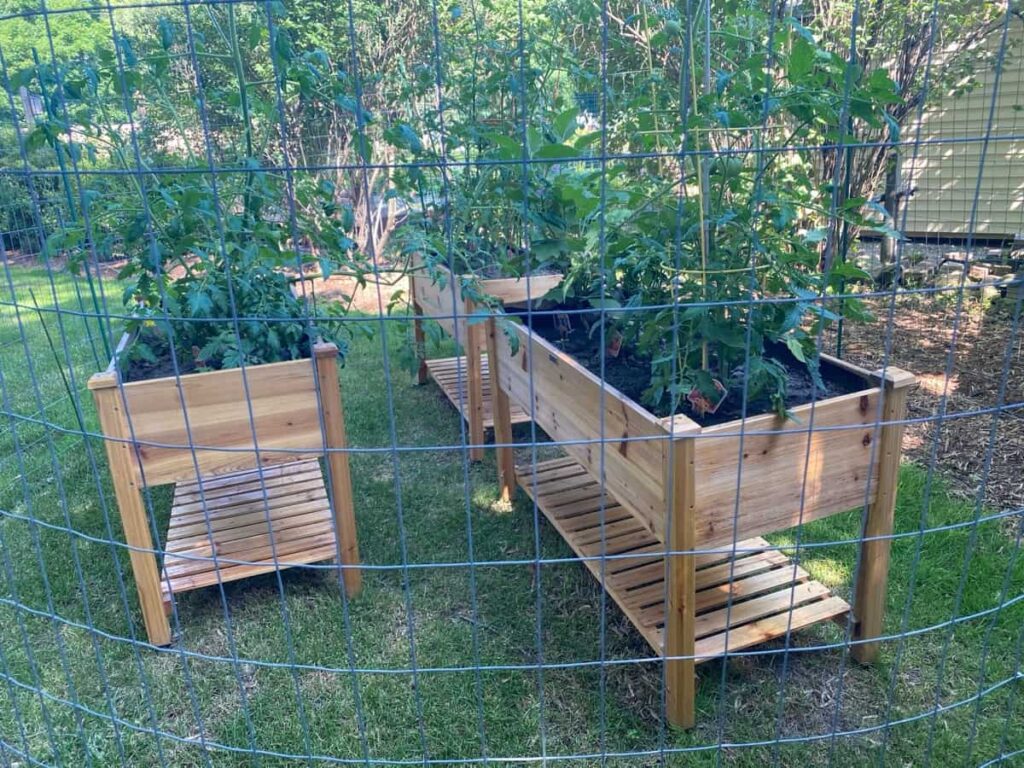
Conclusion
Raised bed gardening has gained popularity in Australia. The main benefit of a raised bed garden is that it provides better control over soil quality, which is crucial for successful gardening. Creating a separate space for your plants above ground level can ensure optimal drainage and prevent waterlogged roots.
- Crops Grown in Summer Season: Best Choices for Summer Gardening
- Organic Pest Control for Tomato Farming
- How to Maximize Sheep Farming Profit
- Broccoli Varieties: Choosing the Right Cultivars for Your Farm
- How to Raise Pigs in Your Own Backyard: A Comprehensive Guide
- Budget Friendly Sheep Shed Ideas: Cheap and Low-Cost Tips
- How Much Do Cattle Farmers Make: Revenue Streams in Cattle Farming
- Management Pests and Diseases in Your Cotton Field
- Sheep Farming Business Plan for Beginners
- Aquaponic Farming at Home: A Step-By-Step Guide
- Profitable Village Farming Business Ideas in 2024
- High-Yield Aquaculture: Fast-Growing Fish for Farming
- Effective Fish Pond Construction Techniques for Beginners
- Irrigation and Water Management in Pineapple Farming
- Blossom to Harvest: Mastering Flowering and Pollination in Papaya Farming
- Pig Fattening Essentials: From Selection to Sale for Beginners
- Raising Wagyu Cattle: A Complete Guide for Premium Beef Production
- Soil Types and Their Water Holding Capacity
- Optimizing Irrigation Schedules for Coconut Groves for Enhanced Yield
- Espresso Your Garden: Coffee Grounds for Healthier Acid-Loving Plants
- The Best Soil Mix for Snake Plants: How to Mix Your Own Snake Plant Soil
- Green Thumb Success: Expert Tips for Cultivating Greenhouse Beans All Year Round
- Bloom All Year Round: The Ultimate Guide to Indoor Hyacinth Care
- Eco-Friendly Gardening: How to Make Liquid Fertilizer from Kitchen Waste
- Ultimate Guide to Grow Anise in Pots: Explore Seed Propagation to Harvesting
- Guide to Raising Chester White Pigs: Discover Breed Facts to Growth Management
- Mastering the Elegance: The Ultimate Guide to Weeping Cherry Tree Care, Planting, and Maintenance
- Ultimate Guide to Planting Garlic in Grow Bags: Growing Strategies for Beginners
- How to Fix Spider Plant Leaf-Related Problems: Natural and Organic Remedies
- 10 Reasons Why Your Tulsi Plant is Shedding Leaves: Home Remedies and Solutions
- Optimizing Growth and Yield: The Advantages of Palm Bunch Ash Fertilizer
- Utilizing Neem Oil Extract as a Natural Pesticide for Hydrangea
- From Soil to Harvest: Various Ways in Which Farmers Can Use AI Tools
- Steps to Encourage and Induce Citrus Flowers: A Comprehensive Guide
- How to Fix Snake Plant Leaf-Related Issues: Natural and Organic Remedies
- Transform Your Garden into a Fragrant Oasis with Raat Ki Rani (Night Blooming Jasmine)
